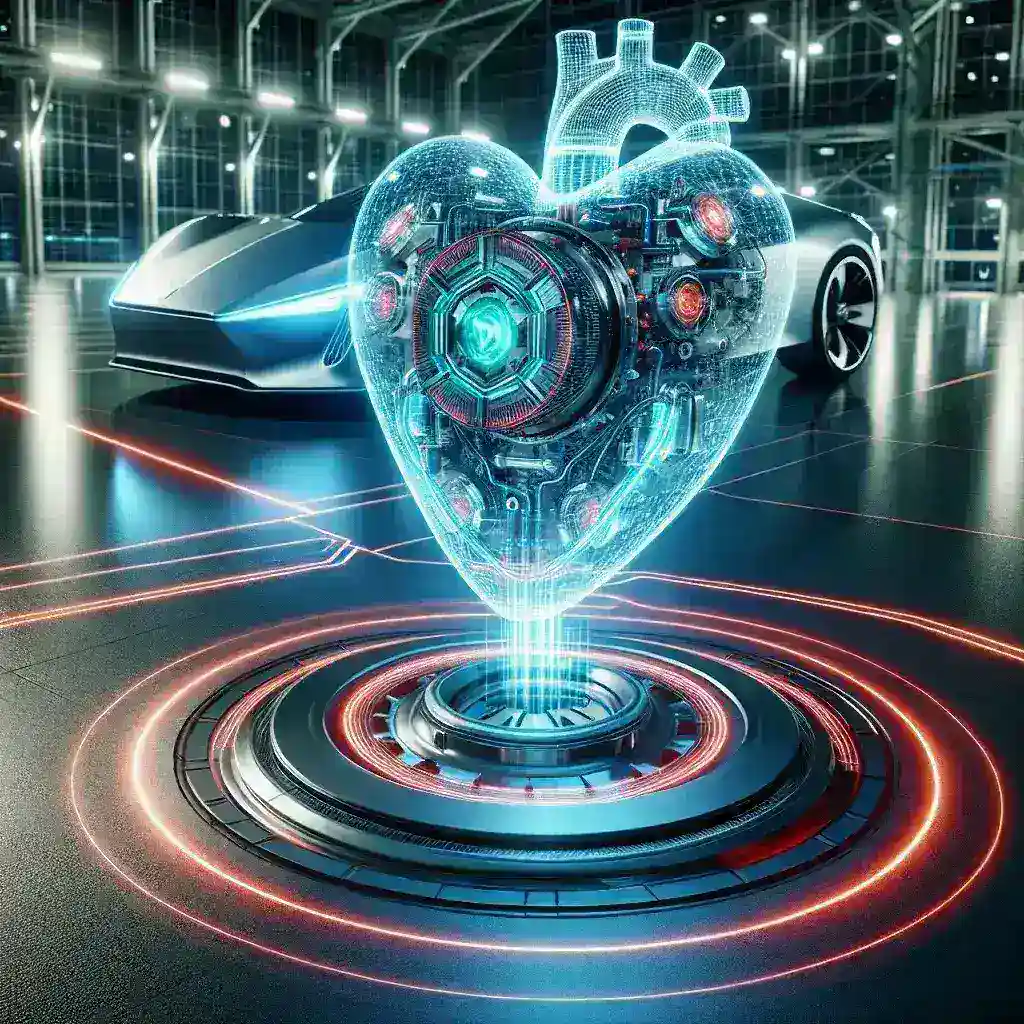The Dawn of a New Era: BMW’s ‘Heart of Joy’ ECU Innovation
In a groundbreaking development that’s sending ripples through the automotive industry, BMW has unveiled its revolutionary ‘Heart of Joy’ Electronic Control Unit (ECU), a technological masterpiece set to redefine the landscape of electric vehicles (EVs). This innovative system represents more than just an incremental improvement – it’s a paradigm shift in how we think about electric vehicle control systems.
Understanding the ‘Heart of Joy’ ECU: A Technical Marvel
The ‘Heart of Joy’ ECU is BMW’s most sophisticated vehicle control system to date, integrating advanced artificial intelligence, machine learning capabilities, and real-time adaptation features. Unlike conventional ECUs, this system operates as a central nervous system for next-generation electric vehicles, coordinating multiple vehicle functions with unprecedented precision.
Key Features and Innovations
- Advanced Neural Processing: Incorporates state-of-the-art neural networks for real-time decision making
- Predictive Energy Management: Optimizes power distribution based on driving conditions and user habits
- Adaptive Performance Tuning: Continuously adjusts vehicle parameters for optimal efficiency
- Intelligent Thermal Management: Revolutionary approach to battery temperature control
- Enhanced Safety Protocols: Next-generation safety features with predictive capabilities
Revolutionary Impact on Electric Vehicle Performance
The ‘Heart of Joy’ ECU represents a quantum leap in electric vehicle performance optimization. By leveraging advanced algorithms and real-time data processing, this system achieves remarkable improvements in several key areas:
Range Enhancement and Efficiency
Through sophisticated energy management algorithms, the ‘Heart of Joy’ ECU extends vehicle range by up to 25% compared to conventional systems. This improvement comes from:
- Intelligent power distribution optimization
- Advanced regenerative braking algorithms
- Predictive route analysis for energy conservation
- Dynamic adjustment of power delivery based on driving conditions
Performance Optimization
The system’s ability to process and adapt to real-time data results in significant performance improvements:
- Enhanced acceleration response
- Improved torque management
- Better handling through intelligent power distribution
- Reduced energy losses during power delivery
The Technology Behind the Innovation
At the core of the ‘Heart of Joy’ ECU lies a sophisticated array of technologies that work in perfect harmony:
Advanced Computing Architecture
- Multi-core Processors: Dedicated processing units for different vehicle functions
- Real-time Data Processing: Microsecond response times for critical operations
- AI Integration: Machine learning algorithms for continuous system optimization
Sensor Integration and Communication
The system incorporates a vast network of sensors and communication protocols:
- High-speed data collection from multiple vehicle systems
- Advanced sensor fusion algorithms
- Seamless integration with vehicle subsystems
- Real-time communication with cloud-based services
Environmental Impact and Sustainability
The ‘Heart of Joy’ ECU’s impact extends beyond performance improvements to environmental considerations:
Reduced Carbon Footprint
- Optimized energy consumption patterns
- Reduced battery degradation through smart management
- Extended vehicle lifespan through predictive maintenance
- Lower environmental impact through efficient resource utilization
User Experience and Interface
BMW has carefully considered the human element in designing the ‘Heart of Joy’ ECU:
Intuitive Control Systems
- User-friendly interface for system monitoring
- Customizable driving modes and preferences
- Real-time feedback on vehicle performance
- Personalized optimization suggestions
Future Implications and Industry Impact
The introduction of the ‘Heart of Joy’ ECU has far-reaching implications for the automotive industry:
Industry Standards and Competition
This innovation sets new benchmarks for:
- Electric vehicle control systems
- Performance optimization
- Energy efficiency standards
- Safety and reliability metrics
Implementation and Rollout Strategy
BMW’s approach to implementing the ‘Heart of Joy’ ECU demonstrates careful consideration of market needs:
Phased Integration
- Initial deployment in flagship electric models
- Gradual rollout across the electric vehicle lineup
- Continuous system updates and improvements
- Comprehensive dealer training programs
Consumer Benefits and Market Response
The ‘Heart of Joy’ ECU delivers tangible benefits to consumers:
Enhanced User Value
- Improved vehicle performance and efficiency
- Lower operating costs through optimized energy use
- Enhanced vehicle longevity
- Better driving experience through intelligent adaptation
Looking Ahead: The Future of Electric Vehicle Technology
The ‘Heart of Joy’ ECU represents just the beginning of a new era in electric vehicle technology. Future developments may include:
- Enhanced AI capabilities for even more sophisticated vehicle control
- Integration with smart city infrastructure
- Advanced autonomous driving features
- Further improvements in energy efficiency and performance
Conclusion: A New Chapter in Electric Vehicle Evolution
BMW’s ‘Heart of Joy’ ECU represents a significant milestone in the evolution of electric vehicles. By combining cutting-edge technology with practical applications, BMW has created a system that not only improves vehicle performance but also contributes to a more sustainable automotive future. As the technology continues to evolve, we can expect even more impressive developments in the realm of electric vehicle control systems, with the ‘Heart of Joy’ ECU leading the way in innovation and efficiency.

